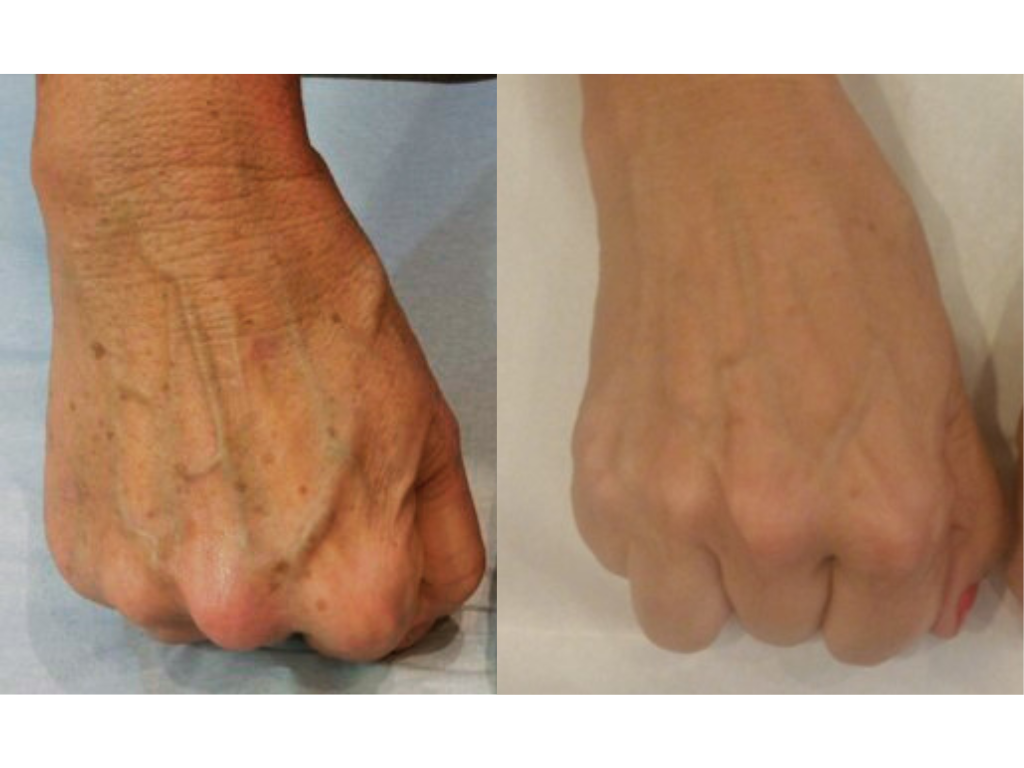Intense Pulsed Light (IPL) Treatment
Contrary to popular belief, Intense Pulsed Light (IPL) is not a laser. IPL treatment uses a broad spectrum of light with multiple wavelengths (seen individually as different colors) and because of this it “flashes” when it is pulsed to the skin forming a single, white-ish color. Utilizing multiple wavelength makes IPL able to treat multiple concerns (like brown spots, redness and enlarge pores) at the same time and restore a more uniform looking, luminous, and youthful complexion to the skin. The energy used in IPL devices is also not focused, hence weaker than a laser, which makes it again a versatile technology for treating the skin.
REAL CLIENTS, REAL RESULTS
What does IPL treat?
IPL is most effective at treating unwanted hair, hyperpigmentation, vascular lesions, diffuse redness, rosacea, freckles and certain types of acne.
Pros of IPL
IPL can treat a wider range of skin conditions at the same time than lasers.
IPL handpieces have a larger surface area than most lasers, making it more efficient to treat a broader area of skin.
IPL recovery is typically faster than laser treatments.
IPL treatments tend to be more affordable than laser treatments.
Cons of IPL
IPL treatments could be not strong or effective enough in certain cases, meaning lasers might be needed to reach the wanted result.
More IPL sessions are needed than laser sessions.
IPL is recommended for Fitzpatrick I-III. skintypes and with cautions for Fitzpatrick IV., meaning not effective or safe for treating darker skin tones.
Concerns can be treated with IPL
Reduction of uneven pigmentation from broken facial veins and capillaries
Treating age spots, sun spots, enlarged pores, acne, and rosacea
Reduction of facial fine lines and minor wrinkles
Treating sun damaged skin
How it works?
After cleansing and prepping the skin, ultrasound gel is applied to the skin for conductivity and comfort. IPL works by exposing the lesions to short bursts or pulses of visible light. During the phototherapy session, the IPL beam will increase the skin’s temperature in the targeted area and this will damage the cells containing pigment/melanin and/or red/blood. After the controlled injury the body will naturally replace these cells with new ones, restoring a more uniform, youthful looking skin.
What to expect after an IPL session?
There is minimal downtime with no open skin, make-up can be applied right after, and you can carry on your business as usual.
Right after your IPL photo-treatment, your skin may look blotchy, red, a little swollen, and you will start to notice sun spots or pigmentation darkening. It is also common for the skin to feel tight or like you have a mild sunburn. However, you can apply makeup/tinted SPF after this treatment, because there is no open skin!
Do's and Dont's after an IPL
It is best to always follow your provider’s post care instructions, but in general below are some do’s and dont’s after an IPL:
Do’s:
Wear a broad-spectrum sunscreen (min. SPF 30) daily and reapply every 2-3 hours
Hydrate and moisturize the skin often
Wash your face 2x daily with a gentle cleanser
Be gentle with your skin, overall
Don’ts:
Apply hot water to the skin
Do saunas and pools in the first 3 days or till your skin feels normal
Skip out on SPF
Use harsh ingredients on the skin like retinols and exfoliants
Pick or scratch at your skin
Have sun exposure on your face







